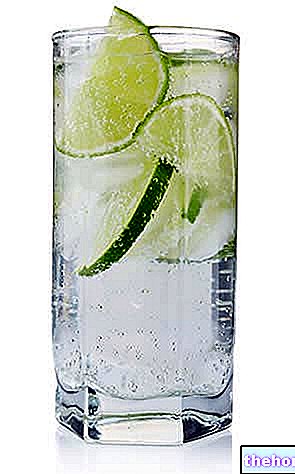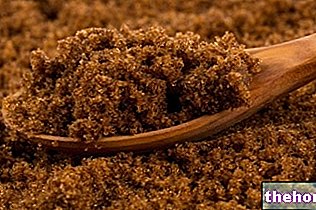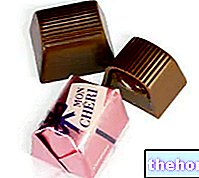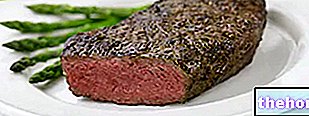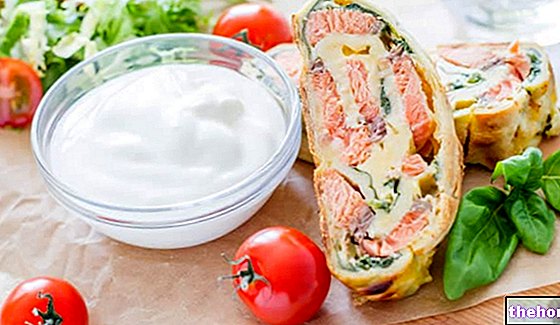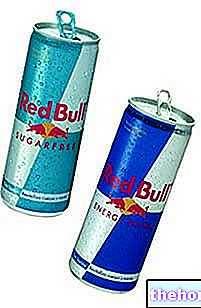Generality
Panelle - in Sicilian panedde - are fried foods based on ingredients of plant origin.

To be precise, panelle are a food obtained by frying discs or slices of a dough made from chickpea flour, water, salt, black pepper and parsley.
The panelle are a real one fast food (term recently replaced by street food) and - despite being part of traditional Sicilian cuisine (from Palermo) - some nutrition experts compare them to other fried products (junk food). However, as we will see below, the carefully processed panelle are not characterized by an excessively excessive energy supply. On the other hand, by virtue of the higher quality of the ingredients (even though they are not suitable for the usual diet of the sedentary man) the panelle should NOT be compared at all to potato chips or industrial croquettes.
The panelle can be eaten alone or as a filling for bread (preferably with sesame), perhaps accompanied by other fried foods (eg croquettes and homemade meatballs).
Panelle are widespread in every corner of the Sicilian capital and beyond.
Other traditional Italian foods very similar to panelle are: the chickpea porridge, the Ligurian panissa and the Savona slice, instead typical of the Liguria region.
Nutritional Characteristics
Panelle are foods composed exclusively of ingredients of vegetable origin, which is why they are suitable for vegetarian and vegan (not raw food).
The only variant able to exclude them from these food philosophies is the type of fat used for frying, that is the use of lard rather than oil; fortunately this is a completely obsolete habit.
The panelle have a not too high caloric quantity (thanks to the high water content of the dough), even if this characteristic varies considerably according to the frying technique. In fact, the example below refers to “state of the art” fried foods, with very hot oil, using absorbent paper to always be kept dry.
NB. The coefficient used below for the estimation of oil residues in the panelle is 8% (8g of oil per 100g of fried panelle); however, without respecting the precautions mentioned above, it is likely to hypothesize that this can easily reach 15% .

Nutritional values (per 100 g of edible portion)
It was also preferred to exclude sesame bread from the nutritional translation of the panelle, in order to obtain a more specific chemical profile of the food; we remind you that, including it in the evaluation, this would inexorably increase the overall calorific value.
The energy of the panelle is mainly supplied by lipids, followed by carbohydrates and finally by proteins. The fatty acids of the triglycerides are basically unsaturated and their composition varies according to the type of oil used for frying.
The carbohydrates are almost totally complex, ie they are made up of the starch of chickpea flour.
The peptides are of medium biological value, therefore they do not use a complete pool of essential amino acids. Fiber is very abundant and cholesterol is absent.
As for the mineral salts, the panelle have a fair and equal amount of potassium and sodium. Regarding vitamins, however, no noteworthy concentrations are found.
Panelle are foods that are suitable for most diets, even if the tendency to structure a very energetic meal limits their use within low-calorie diets.
They have no contraindications for metabolic diseases, with the only clarification of avoiding table salt in the diet for hypertension.
They do not contain gluten and lactose, which is why the panelle can be included in the nutritional schemes for these food intolerances.
The average portion of panelle as a first course, if eaten alone, is about 200-250g (280-350kcal); on the contrary, inserted in a 50-60g sesame sandwich, they are sufficient in portions of 100g (total 310kcal).
Preparation
The recipe for the panelle is very simple.
Panelle in the Oven
Problems with playing the video? Reload the video from youtube.
- Go to the Video Page
- Go to the Video Recipes Section
- Watch the video on youtube
Ingredients for three panelle
100g chickpea flour, 300ml water, salt to taste, chopped fresh parsley to taste, ground black pepper to taste, oil (for frying), sesame bread 150-180g (three rolls).
Method
- Mix the chickpea flour with the water, salt, pepper and chopped parsley;
- obtained a semi-liquid mixture, on a sheet of baking paper, spread half a ladle of dough and create discs with a diameter of about 10cm and 0.5cm thick.
- Wait half an hour for them to thicken; in the meantime heat the frying oil (better extra virgin olive oil or peanut).
- Dip them, two or three at a time, and cook until they get a golden color. Drain and pat them thoroughly. Cut the sandwiches in half and stuff them.

